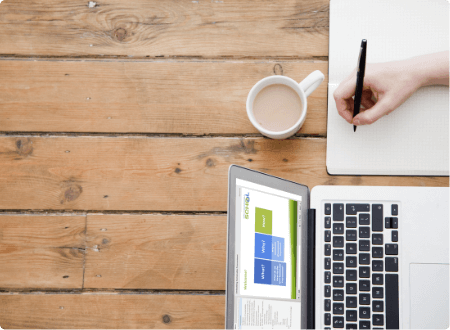In lockdown, businesses and individuals are responding to homeschooling digital learning needs and re-purposing devices. If you're thinking of co-ordinating a laptops for learning project, here are some key pointers based on my very recent (and ongoing) experience of co-ordinating a project in the North of England.
Thousands of children around the UK are at risk of falling behind their peers because they don’t have access to digital learning. Whilst digital exclusion isn’t a new thing, there is a need for urgent action to address the current home learning situation.
At a micro level, many individuals and businesses are co-ordinating local schemes aimed at repurposing existing hardware to schools. This short guide helps you consider critical issues, to ensure that your project runs smoothly, and ultimately benefits those in most need.
1. Which hardware and how will it be used?
Most online learning is being delivered using web-based resources such as Google Classroom, Purple Mash and TT Rockstars. Secondary school students are also accessing live on-line learning.
The general consensus is laptops to secondary and primary, and tablets for primary aged children. In primary schools children often use tablets in class and should be familiar with them. Avoid PCs, they’re bulky, can be complicated to set up and require a desk or table to work from, which many
homes won’t have the capacity to provide.
2. Sourcing hardware
You can shout out for laptops and tablets from both individuals and businesses. For businesses, circular economy (re-using resources) will be an advantage, but issues of data security are likely to be a concern.
Think about how units will be donated – when, where and how? You need a Covid secure, manned location where laptops can be left by donors and potentially collected by beneficiaries.
3. Data security and GDPR
This is where it gets more complicated. You really need to know who has donated each unit. Not only is this useful for traceability and accountability, but there are practical issues. For example, if you are receiving Apple products, unless you have the EXPLICIT permission of the owner to access
the tablet, Apple won’t authorize access to the device. Create a simple form which considers permission, formally gifts the item to you, tells you any passwords for access and confirms the previous owner’s acceptance of your GDPR policy.
GDPR gets everywhere. If you are intending for volunteers to be ‘wiping’ software, there will be GDPR and privacy issues. The reality is, even if you remind people to remove their data from the unit, most people won’t have. Which means that whoever is wiping that data has full access to it.
You will also need data removal software to ‘wipe’ each unit. Blancco is an industry recognized product. The unit will also need an operating system reinstalling. Consider asking a commercial partner to perform this service for you. Have a conversation with local digital companies and see if they will partner the project and donate their time and expertise.
4. Identifying beneficiaries
I would recommend distributing units via known organisations. Schools are the most obvious partners, but you may choose to offer support to any educational institution (including adult education) and charity partners supporting the most vulnerable in our society.
Unless there’s a really good reason, avoid donating directly to individuals as this is likely to stir up a can of worms in terms of justifying decisions. Schools and other organisations are far better placed to assess need and distribute units.
You might choose to suggest to the recipient organization that the units are distributed on loan, rather than gifted to families. This creates a level of accountability for the unit. The unit remains the property of the beneficiary organization and they have the flexibility to choose how they distribute.
5. Connectivity – creating the ideal project
Hardware only tackles one aspect of the problem, connectivity is another. For context, if a student lives in a household with limited or no data, online learning remains impossible without internet connection.
At the same time as sourcing laptops and tablets, think about sourcing dongles and the data that is needed. In an ideal situation each unit should be provided with a 4G dongle and an unlimited data package. The large phone providers are looking at this issue currently and it’s worth a conversation with them. Don’t underestimate the data that online learning requires – it is significant!
6. Sustainability of your project
Most projects will be a short-term response to immediate need, but as mentioned previously, digital disadvantage is long term issue which reduces the life chances of the most vulnerable in our societies.
Think about whether you want your project to address long term disadvantage. This won’t be a quick fix, it needs careful thought, understanding and targeting of disadvantage in your local
communities. Actions are likely to consider long term equity of digital access, support for families to learn digital skills and the facilitation of spaces where people can learn in a supported environment.
Look at the excellent Good Things Foundation if you want to learn more about the causality of digital deprivation, its affects and how to design inclusive projects.
Good Luck to your project!





